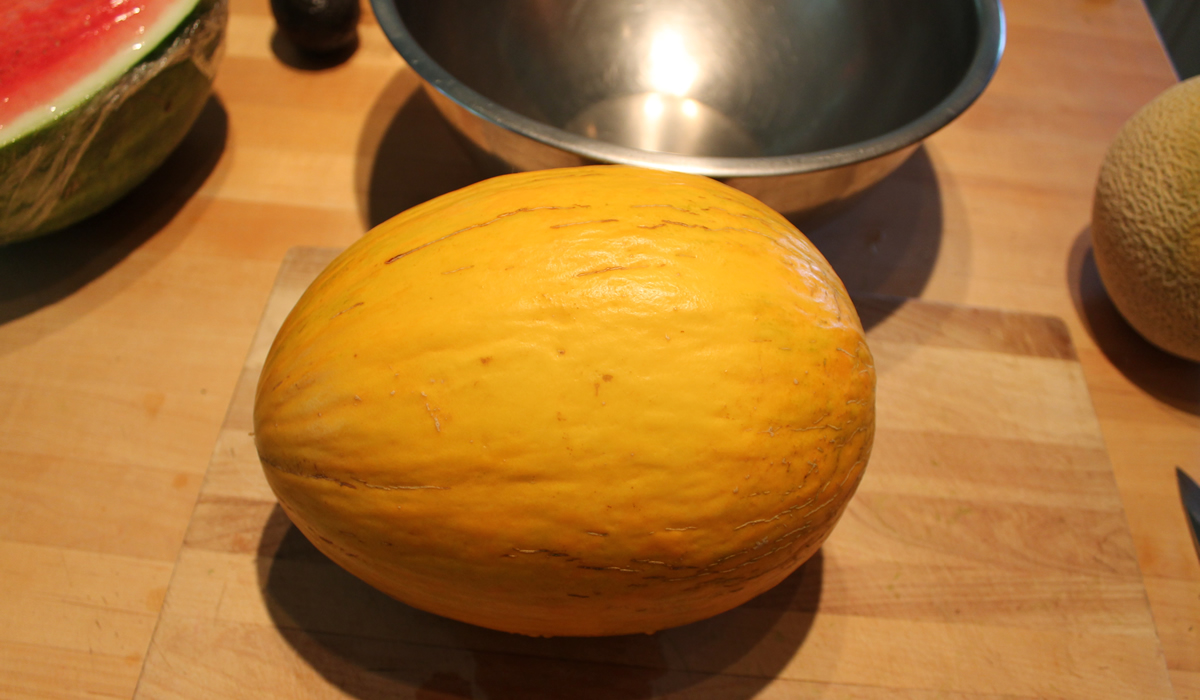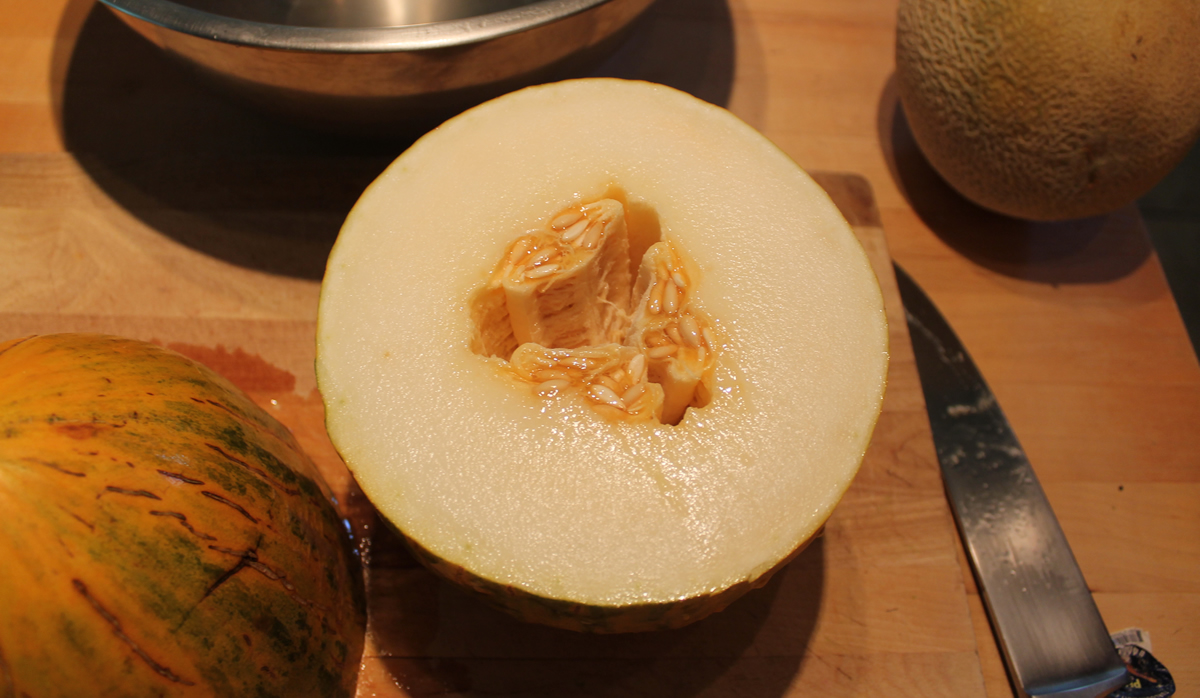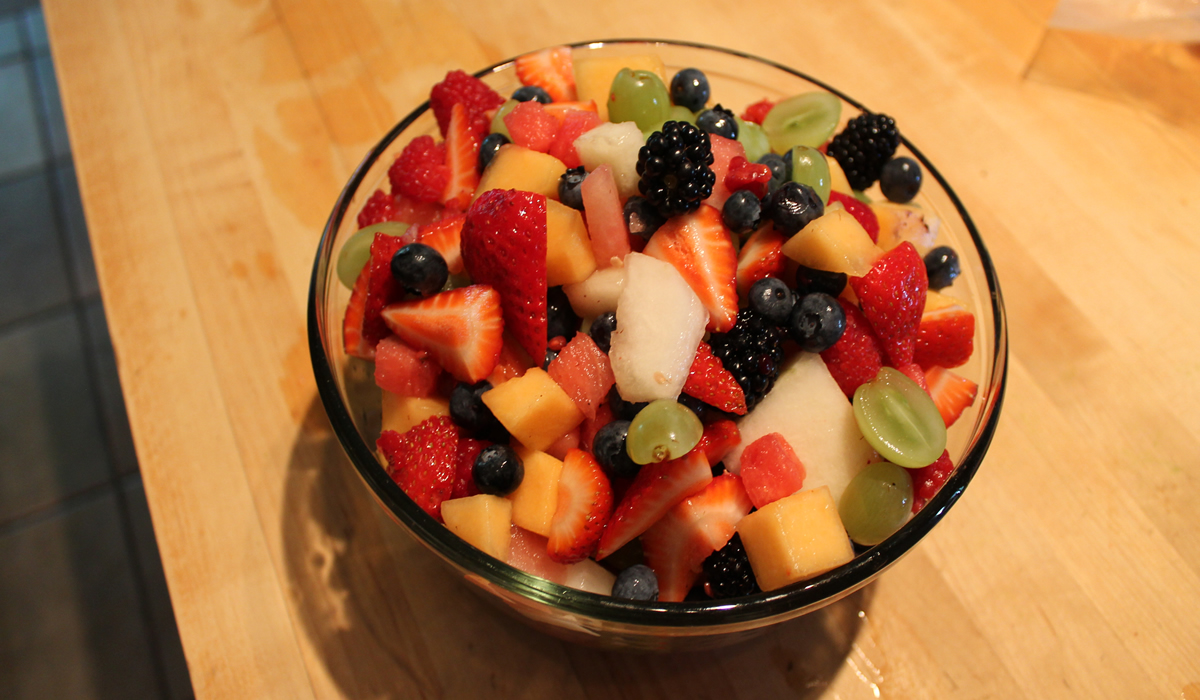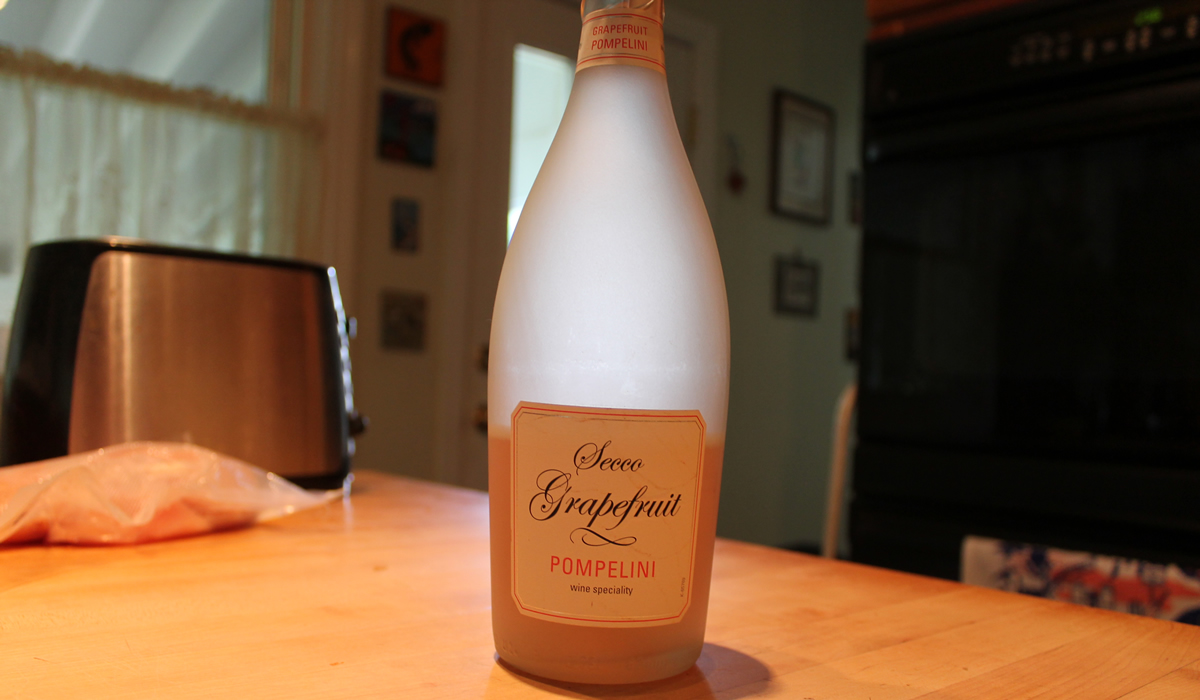I found a new melon at Gentile’s, today – a Piel del Sapo – also known as a Santa Claus Melon! It’s a casaba type melon and is a winter melon variety along with honeydew, Crenshaw, and Canary.
From Specialty Produce:
The melons resemble a small football-shaped watermelon. Its flesh is pale green to white in color and has a succulent texture with a mildly sweet flavor. The color of its hard shell will be varying shades of green and yellow depending upon variety. Typically the brighter the yellow of the melon rind, the riper and sweeter it is. Its exterior skin is wrinkled, a distinguishing feature of the Santa Claus melon. Its fragrance is subtle as a result of its thick skin. Unlike many other melons, it will not release a signifying aroma when ripe. The ripest Santa Claus melon will have a soft blossom end that yields to gentle pressure and its skin will be a vibrant yellow hue.
The Santa Claus melon is a casaba type, a variety of melon which is native to Turkey. It is cultivated in South America, Spain, Brazil and in America in California and Arizona. A variety of Santa Claus melon known as Piel de Sapo originated in Spain and on average the country produces 30,000 hectares of the melons annually. The Santa Claus melon thrives in warm climates and like many other winter melons takes longer to reach maturity than most melons, needing a full 110 frost free days on the vine.
In Spanish, Piel de Sapo translates to “skin of a toad”, a name which is reflective of the melons unique rind coloring and texture.
We have been eating a lot of fresh fruit this past month – with a lot of melons. There’s always a bowl of cut up fruit in the ‘fridge, usually with a bit of white wine or prosecco drizzled on top. I made one bowl with just melons, and another with assorted fruits – one needs variety!
Variety for the fruit bowls was switching out the white wine for a sparkling grapefruit wine –
I picked it up on a whim months ago and it’s been just sitting around waiting for a reason to be opened. I couldn’t see actually drinking something like this, but it works on top of fruit!
Oh, and as an aside… we all know it’s important to wash produce before eating it, but it’s really important to wash melons before cutting them! Anything living on the outside of that melon will be carried right into the melon with the first knife cut.
Stay healthy, boys and girls!




